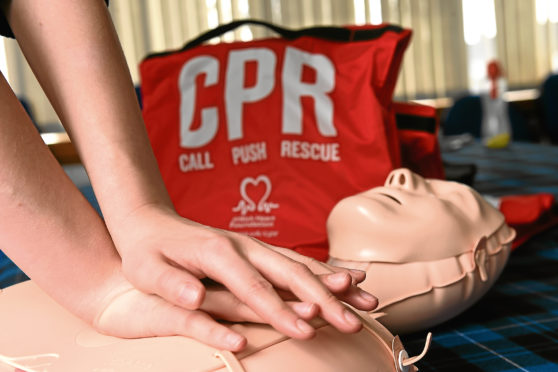I witnessed a dead man being brought back to life at a crematorium last week.
Yes, it was a miracle. But not in a divine intervention way.
Here’s how it played out. I was at a family funeral in Edinburgh when one of my cousins keeled over in the waiting room. Long story short, his heart had stopped.
That bit was unlucky. What was more fortunate was that he had hit the deck next to a nurse whose day job includes teaching life support.
She stepped in, rallied around help and a team of people, including crematorium staff, kept him going until the crem’s defibrillator arrived and they shocked his heart back into rhythm, before the paramedics got there and got him to hospital.
Result … one less corpse at the funeral. Which is a good thing. The miracle at work here was the one of human skill and knowledge. Not just that nurse or those who helped, but the fact we can now equip ourselves with the know-how to save lives. All of us.
CPR is not an arcane art or a mystery. It is easily taught and easily learned. Children can do it.
Defibrillators, also, are not magic wands. They are genius pieces of kit that, again, anyone can work. If they have one to hand.
What did I learn the day my cousin didn’t die?
That defibrillators should be scattered across the country, where people can get at them quickly and easily. There’s a few already in public places in big boxes marked AED. Look out for them.
And we should all learn CPR.
Right now there is a Save A Life For Scotland campaign running. Its aim is simple, to get as many people armed with CPR skills as possible so they, too, can step in when needed.
And that could happen at any time, anywhere, to anyone, be it a stranger, a friend or a loved one.
All it takes is for all of us – you, me – to visit the website at www.savealife.scot pop in your postcode and you’ll get a list of where and when CPR classes can be had near you.
Go on. Be the one who can work a miracle.
